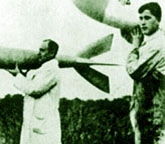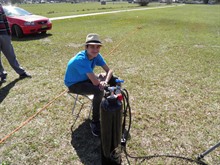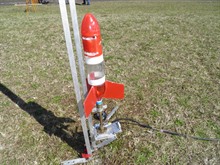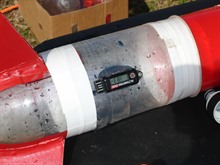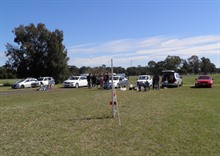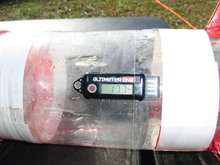 |
 |
|
|
last updated: 9th November 2024 - Day 236 - Launch Tubes #2 |
|
|
|
Splicing Bottles AS#5 |
|
#235 - Coming Soon |
|
#234 - Coming Soon |
|
#233 - Coming Soon |
|
#232 - Coming Soon |
|
#196 - Coming Soon |
|
#193 - Coming Soon |
|
#172 - Coming Soon |
|
|
| FLIGHT LOG | ||||||||||||||||||||||||||||||||||||||||||||||||||||||||||||||||||||||||||||||||||||||||||||||||||||||||||||||||||||||||||||||||||||||||||||||||||||||||||||||||||||||||||||||||||||||||||||||||||||||||||||||||||||||||||||||||||||||||||||||||||||||||||||||||||||||||||||||||||||||||||||||||||||||||||||||||||||||||||||||||||||||||||||||||||||||||||||||||||||||||||||||||||||||||||||||||||||||||||||||||||||||||||||||||||||||||||||||||||||||||||||||||||||||||||||||||||||||||||||||||||
|---|---|---|---|---|---|---|---|---|---|---|---|---|---|---|---|---|---|---|---|---|---|---|---|---|---|---|---|---|---|---|---|---|---|---|---|---|---|---|---|---|---|---|---|---|---|---|---|---|---|---|---|---|---|---|---|---|---|---|---|---|---|---|---|---|---|---|---|---|---|---|---|---|---|---|---|---|---|---|---|---|---|---|---|---|---|---|---|---|---|---|---|---|---|---|---|---|---|---|---|---|---|---|---|---|---|---|---|---|---|---|---|---|---|---|---|---|---|---|---|---|---|---|---|---|---|---|---|---|---|---|---|---|---|---|---|---|---|---|---|---|---|---|---|---|---|---|---|---|---|---|---|---|---|---|---|---|---|---|---|---|---|---|---|---|---|---|---|---|---|---|---|---|---|---|---|---|---|---|---|---|---|---|---|---|---|---|---|---|---|---|---|---|---|---|---|---|---|---|---|---|---|---|---|---|---|---|---|---|---|---|---|---|---|---|---|---|---|---|---|---|---|---|---|---|---|---|---|---|---|---|---|---|---|---|---|---|---|---|---|---|---|---|---|---|---|---|---|---|---|---|---|---|---|---|---|---|---|---|---|---|---|---|---|---|---|---|---|---|---|---|---|---|---|---|---|---|---|---|---|---|---|---|---|---|---|---|---|---|---|---|---|---|---|---|---|---|---|---|---|---|---|---|---|---|---|---|---|---|---|---|---|---|---|---|---|---|---|---|---|---|---|---|---|---|---|---|---|---|---|---|---|---|---|---|---|---|---|---|---|---|---|---|---|---|---|---|---|---|---|---|---|---|---|---|---|---|---|---|---|---|---|---|---|---|---|---|---|---|---|---|---|---|---|---|---|---|---|---|---|---|---|---|---|---|---|---|---|---|---|---|---|---|---|---|---|---|---|---|---|---|---|---|---|---|---|---|---|---|---|---|---|---|---|---|---|---|---|---|---|---|---|---|---|---|---|---|---|---|---|---|---|---|---|---|---|---|---|---|---|---|---|---|---|---|---|---|---|---|---|---|---|---|---|---|---|---|---|---|---|---|---|---|---|---|---|---|---|---|---|---|---|---|---|---|---|---|---|---|---|---|---|---|
|
||||||||||||||||||||||||||||||||||||||||||||||||||||||||||||||||||||||||||||||||||||||||||||||||||||||||||||||||||||||||||||||||||||||||||||||||||||||||||||||||||||||||||||||||||||||||||||||||||||||||||||||||||||||||||||||||||||||||||||||||||||||||||||||||||||||||||||||||||||||||||||||||||||||||||||||||||||||||||||||||||||||||||||||||||||||||||||||||||||||||||||||||||||||||||||||||||||||||||||||||||||||||||||||||||||||||||||||||||||||||||||||||||||||||||||||||||||||||||||||||||
| Day 164 - Liquid Density Experiment - Part 1 | ||||||||||||||||||||||||||||||||||||||||||||||||||||||||||||||||||||||||||||||||||||||||||||||||||||||||||||||||||||||||||||||||||||||||||||||||||||||||||||||||||||||||||||||||||||||||||||||||||||||||||||||||||||||||||||||||||||||||||||||||||||||||||||||||||||||||||||||||||||||||||||||||||||||||||||||||||||||||||||||||||||||||||||||||||||||||||||||||||||||||||||||||||||||||||||||||||||||||||||||||||||||||||||||||||||||||||||||||||||||||||||||||||||||||||||||||||||||||||||||||||
|
Date:
29th August 2015 Location: Whalan Reserve, NSW, Australia Conditions: Calm to light breeze ~5km/h, sunny 21C, Team Members at Event: GK and Paul K. Liquid Density Preliminary Experiment - Part 1This week we performed a preliminary experiment that we plan on carrying out next week. A common question we get asked all the time is if there is something that can be added to the water to produce more thrust. Since Paul also had to choose a science experiment to do at school, we decided to combine the two and take this launch opportunity to do a trial run to see if we could detect a difference as simulators predicted that the difference was going to be small. In this experiment we wanted to compare a denser liquid to water alone. Please see Day 165 for a full write-up of the liquid density experiment. For the denser liquid we made up a sugar solution by putting 700g of sugar into a jug and then added warm water until we had 1100mL of solution. The density turned out to be 1.25 g/cm^3 For the rocket itself we decided to use a single bottle rocket as that represented the typical rocket kids fly in school projects. We just put our regular fins and nosecone on it as the ultimate altitude didn't matter because it was going to be a relative comparison. Rocket Parameters
ResultsFollowing is a table of all the flights and their recorded altitudes. We alternated the solutions to try to eliminate any changing environmental conditions.
Here is a graph of the flights grouped by fuel.
From this experiment we can see that there is only a slight difference between the performance of the two densities, although when you average the altitudes for each fuel we can see that on average the denser liquid performed worse. The water reached an averaged altitude of 180.5 feet and the sugar solution reached 178.2 feet. Although there was one sugar flight that reached 194 feet which looked out of place with the other flights. If this flight was removed from the calculation then the average would have been closer to 174 feet. The water flights were quite consistent. The difference here is close to the 3 feet difference the simulator predicted. We will perform this experiment again to see if it also gives similar results and we will also try alcohol as a lower density liquid to compare against. Here are some images from the experiment:
We also learned from the experiment that the sugar solution makes everything very sticky, though it was easily cleaned up with fresh water. I am sure the ants had a field day ... mana from heaven? Other Flights
Other than the experiment flights, we
also flew a number of other rockets at
the launch. Throughout the day we
flew a total of 3 Axion II's with foam
which are always fun to watch. Paul also
launched his Pod 2 rocket and recovered
it safely. He's been flying this rocket
for quite a few years now and it always
performs well.
While performing the density experiments
we were asked how much of a difference
the water makes to the flight of the
rocket, so when we finished the
experiment we launched the
small rocket with air only. The
rocket only went up to 54 feet, before
tipping over and crashing just as the
parachute was coming out. No serious
damage was done though. This was
significantly lower than I expected, but
the rocket was slightly on the heavy
side.
Flight Details
|
